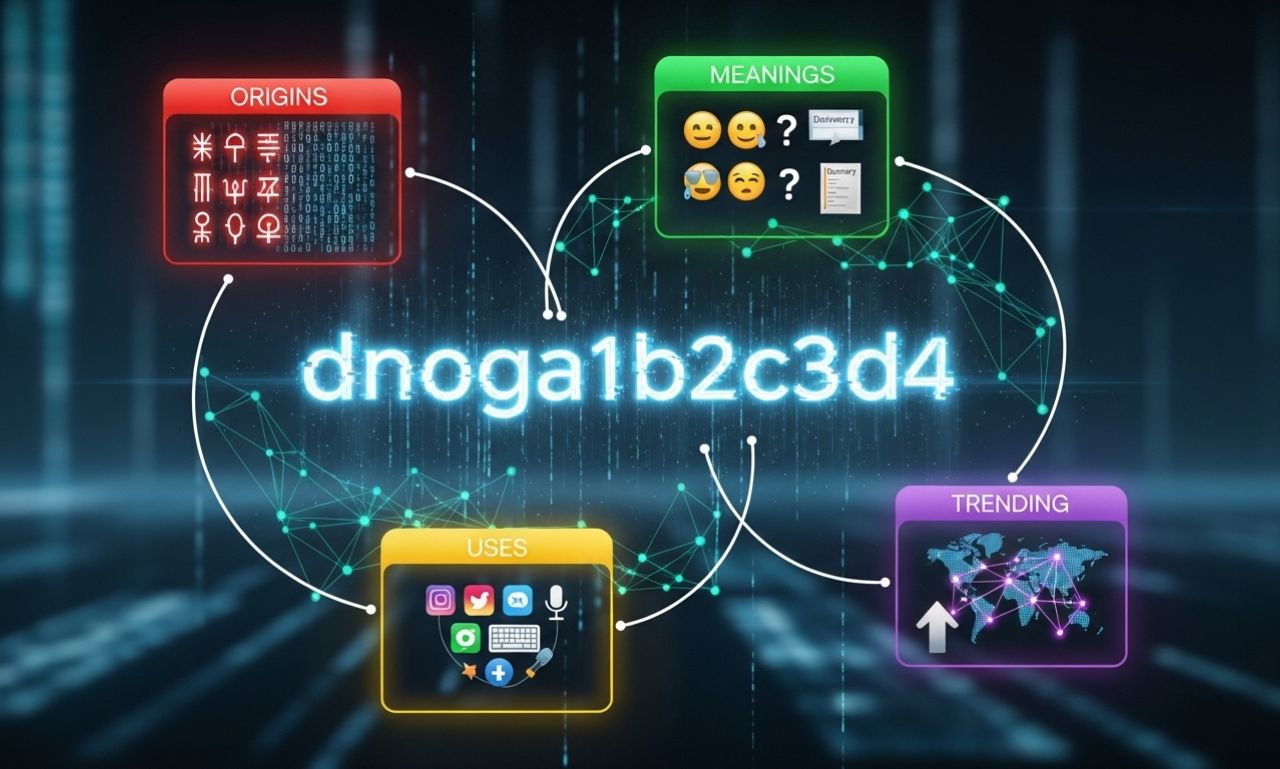In the digital age, cryptic alphanumeric sequences like dnoga1b2c3d4 not only spark intrigue—they catalyze community-wide curiosity and caution. Though its exact origin remains elusive, this 12-character string has appeared across various platforms, from code snippets to blog pages, triggering speculation that spans from playful placeholders to potential cybersecurity threats. This in-depth look unpacks what dnoga1b2c3d4 might signify, why it’s drawing attention, how to respond responsibly, and what lessons it offers in a hyperconnected world.
What Exactly Is dnoga1b2c3d4?
At first glance, dnoga1b2c3d4 seems like a random collection of lowercase letters and digits—but that’s precisely what makes it so fascinating. Analysts and bloggers agree it’s an alphanumeric identifier that could serve multiple purposes in system design: from session tokens and developer placeholders to metadata tags or tracking parameters. It’s commonly seen in:
- Application logs or session tokens for identifying user activity
- URLs and API calls as query strings or request identifiers
- Back-end databases or configuration files as unique referencing values
Its structure—letters followed by alternating numbers—suggests both randomness and systematic design, often consistent with unique token generation algorithms.
Where Has It Been Spotted?
Here’s a breakdown of known contexts where dnoga1b2c3d4 has surfaced:
| Context | Observed Usage |
| Code Repositories | Inside GitHub comments or open-source code samples |
| Configuration Files | Embedded in JSON, XML, or metadata elements |
| Web Elements | Hidden within HTML meta tags or blog directories |
| Logs & Debug Outputs | API logs, server logs, or console debug traces |
| Community Forums | Shared in tech blogs and forums as a mystery token |
Despite this scattered presence, there’s no confirmed source, author, or documented purpose—making dnoga1b2c3d4 an enigma wrapped in plain text.
Popular Theories About Its Purpose
A. Developer Placeholder or Debug Artifact
The most mundane explanation is often the most plausible. Developers frequently insert placeholder values or debug strings during testing—and occasionally, these tokens survive deployment by accident.
B. Digital Watermark or Tracking Mechanism
Some theorize dnoga1b2c3d4 may be an embedded watermark, used to trace files, build versions, or unauthorized use—especially in proprietary code or content.
C. Malware Indicator or C2 Beacon
Cybersecurity analysts caution that such unexplained strings could act as markers in malicious systems—for command-and-control communication, payload activation, or logging stealthy activity.
D. Purely Cultural Mystery
Part of the intrigue is cultural—the internet loves a puzzle. Discussions on dnoga1b2c3d4 reflect themes of digital folklore, where cryptic codes become communal mysteries—like the famed Cicada 3301 or ARG-based marketing campaigns.
Risks & Why You Should Care
Even if harmless, dnoga1b2c3d4 represents broader lessons in code hygiene and security:
- Digital footprint visibility: Unknown tokens could unintentionally expose sensitive workflows or development processes.
- Security red flags: Repeated unexplained strings in logs or code may warrant investigation by security teams.
- Loss of trust: Legacy placeholders left in public-facing applications can erode confidence in development rigor or content reliability.
Recommended Actions If You Encounter It
If dnoga1b2c3d4 appears in your environment, consider the following steps:
- Audit your source
Locate where the string appears—code, logs, metadata—then trace its origin. - Identify intent
Ask the creator or review commits to determine whether it’s a placeholder, watermark, or something else. - Run security scans
Use antivirus and endpoint tools to rule out malicious implications. - Monitor related activity
Look for unusual network traffic or API behavior associated with the string. - Clean or document
Remove unnecessary placeholder strings or clearly document their purpose in code logs or comments.
Why dnoga1b2c3d4 Resonates
Despite being a seemingly mundane code, dnoga1b2c3d4 embodies several powerful digital phenomena:
- Curiosity-driven engagement: Unknown code breeds collaboration, analysis, and storytelling.
- Community investigation: Forums and tech professionals rally to reverse-engineer or explain mysteries.
- Subtle reminders of digital vigilance: Even small anomalies can unveil systemic risks.
It demonstrates that in the interconnected digital landscape, every piece of code—however small—matters.
Final Thoughts
dnoga1b2c3d4 may yet remain unsolved, but its value lies less in meaning and more in the process it triggers. It’s a symbol of our collective desire to understand hidden systems, the importance of transparent software practices, and the fragility of digital ecosystems when anomalies go unchecked.
Whether a forgotten placeholder, a watermark, or something more elaborate, dnoga1b2c3d4 reminds us: behind every line of code is intent, oversight, and the potential for discovery.
Also Read About :- Ztec100.com
